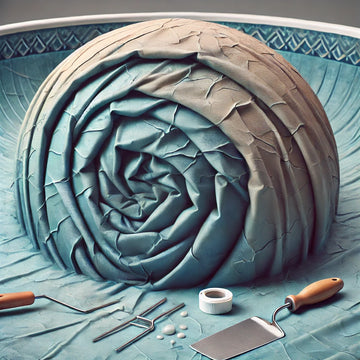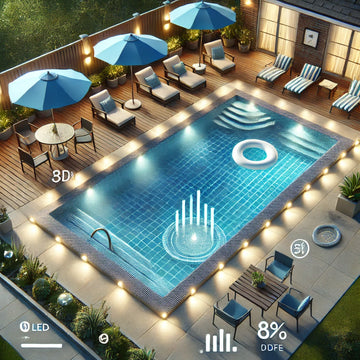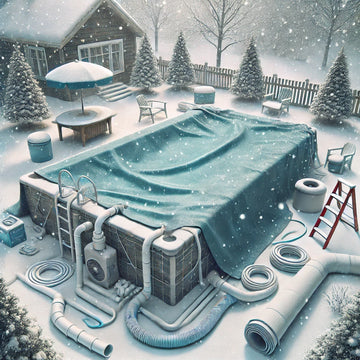How to Properly Sanitize Your Pool After Removing a Dead Animal
As an inground pool owner, a dead animal is the last thing you want to find floating in your pool. If this happens, dealing with the situation involves more than just fishing the animal out of your pool and moving on. There are several important steps to take to ensure that the animal is dealt with properly and your pool is properly sanitized.
Read More: HOW TO SUCCESSFULLY RE-OPEN YOUR POOL AFTER WINTER
To help you tackle this situation when it happens, we will outline the steps you’ll need to take after finding a dead animal in your pool while explaining the risks of not carrying out proper sanitization and filtration.
Types of Animals Typically Found in Pools
The types of critters people often find in their pools are typically small rodents but can include other types of species as well. Here are some of the types of creatures you may find in your pool:
- Squirrels and chipmunks
- Mice
- Birds
- Frogs
- Raccoons
- Skunks
- Lizards
- Snakes
- Bats
- Feral cats
Risks of Having a Dead Animal in Your Pool
Finding a dead animal in your pool won’t just give you a fright. In fact, it can pose a certain amount of risk if you don’t take the proper steps to sanitize your pool.
Many animals carry diseases that can be passed on to humans, and with deceased animals, you run the risk of having harmful bacteria seeping into your pool water. For this reason, it’s important to follow the proper protocol immediately after discovering a dead animal in your inground pool.
Steps to Take If You Find a Dead Animal in Your Pool
Fish it Out
Your first step upon discovery of a dead animal is to remove it from your pool immediately using your pool net. Wear gloves during this step to protect yourself from contaminants.
Dispose of it Properly
Once the animal has been removed, you will need to safely dispose of it. In most cases, small animals like mice and squirrels can be disposed of in the garbage or buried on your property.
If you are able to dispose of it in your garbage, place the dead animal in a plastic garbage bag and double bag it before sealing the bags and placing them in the garbage bin immediately.
If you are unsure of the best way to carry out the disposal, contact your local municipality for instructions.
Disinfect Your Pool Net
Since your pool net came in contact with the animal, you will need to disinfect the net and wash your hands before you proceed with the next steps.
Shock Your Pool
To ensure that no harmful bacteria have been left behind in your pool water, you will need to shock your pool.
When shocking your pool, you’ll need to use enough chlorine to reach a chlorine contact time (CCT) of at least 9600. This process can take up to 8 hours, so be sure to test the water every so often to check on the levels.
Run Your Filters
Once you’ve finished shocking your pool, run your filters for longer than you normally would. This will help to get rid of any additional contamination in your pool resulting from the dead animal.
A good rule of thumb is to run your filters for at least three turnovers (the amount of time it takes to filter all your pool water once).
Disinfect Your Filtration System
As an extra layer of protection, disinfect your filtration system after running your filters. This will help to ensure there are no traces of bacteria left over.
To do this, use 20 parts water to 1-part sodium hypochlorite. Be sure to use a sodium hypochlorite solution that is of a 12 to 15 percent concentration.
Run Your Filters Again
While three turnovers should do the trick, just to be sure that all traces of bacteria and contamination are completely gone, run your filters one more time.
Check Your Levels
After your final round of filtration, make sure to check your pool’s chlorine and pH levels and make adjustments as needed.
Your chlorine levels should range from 20 ppm to 5 ppm and pH should be 7.2 to 7.6 in order for your pool to be safe to swim in again. Once you have reached these levels, your pool should ready for your family to enjoy once again.
Preventing Animals From Drowning in Your Pool
The best way to handle a dead animal in your pool is to prevent them from getting in in the first place.
Here are a few ways you can keep animals out of your inground pool:
- Having a quality safety cover and keeping your pool covered when not in use
- Install automatic sprinklers to keep wildlife away from your pool
- Create a ramp or other device to help curious animals get out of your pool
- Keep your trees trimmed to prevent animals from falling or jumping from overhanging trees
While this may seem like a lot of work to keep small critters at bay, when it comes to the health and safety of your family – and your pool – it’s best not to take any chances. Always go above and beyond to sanitize your pool and filter out any possible contaminants to ensure that your pool is safe to swim in and can be enjoyed without worry.




